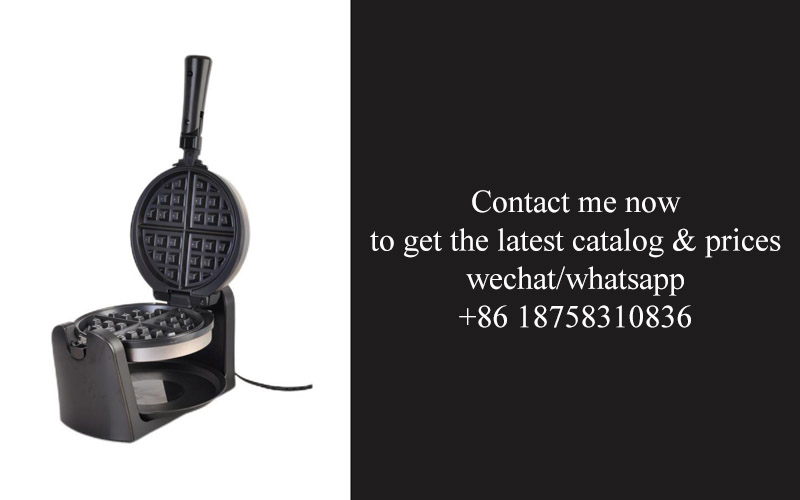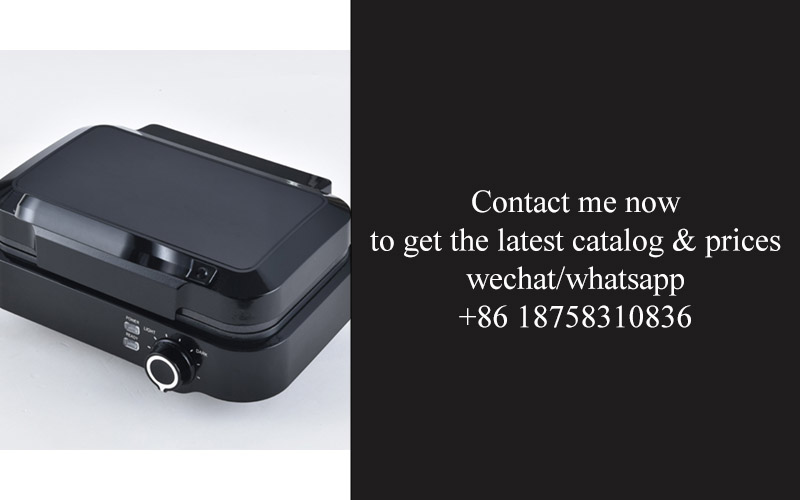Address
304 North Cardinal
St. Dorchester Center, MA 02124
Work Hours
Monday to Friday: 7AM - 7PM
Weekend: 10AM - 5PM
Address
304 North Cardinal
St. Dorchester Center, MA 02124
Work Hours
Monday to Friday: 7AM - 7PM
Weekend: 10AM - 5PM

As the grill manufacturing industry continues to evolve, a significant shift has been observed in the way companies approach the production of custom grill components. The integration of in-house mold making has become a cornerstone for many businesses, offering a myriad of benefits that range from enhanced design capabilities to improved cost efficiency. This article delves into the impact of in-house mold making on the grill industry, showcasing how it has become a pivotal factor in driving innovation, ensuring quality, and maintaining a competitive edge in the market.
In the competitive world of grill manufacturing, the shift towards in-house mold making has become a significant trend. This move, once considered a luxury for only the largest corporations, is now becoming more accessible to smaller businesses as well. Let’s delve into why this trend is gaining momentum and how it’s reshaping the industry.
Grill manufacturers are increasingly recognizing the advantages of producing their own molds. Traditionally, these molds were sourced from external suppliers, a process that could be time-consuming and costly. However, with the advent of advanced manufacturing technologies, creating molds in-house has become a viable option for companies of all sizes.
One of the primary benefits of in-house mold making is the speed at which products can be brought to market. Custom molds can be designed and produced quickly, allowing manufacturers to respond swiftly to market demands and consumer trends. This agility is crucial in an industry where innovation is key to staying ahead of the competition.
Moreover, having in-house mold capabilities enables manufacturers to maintain a high level of control over the quality of their products. When molds are produced internally, there’s a direct line of communication between the design team and the production floor. This seamless integration allows for real-time adjustments and ensures that the final product meets the exact specifications required.
The cost savings associated with in-house mold making are also hard to ignore. While the initial investment in mold-making equipment can be substantial, over time, it can lead to significant cost reductions. By eliminating the need to outsource mold production, manufacturers can avoid the additional expenses that come with third-party suppliers, such as shipping fees and longer lead times.
Another critical advantage is the ability to iterate and improve upon product designs. With in-house mold making, manufacturers can experiment with different designs and materials without the constraints of external suppliers. This iterative process can lead to innovative and unique grill products that stand out in a crowded market.
Innovation is not just about creating new products; it’s also about enhancing existing ones. In-house mold making allows for the refinement of product features, such as improved heat distribution in grill grates or the integration of new technologies like smart grilling controls. These enhancements can significantly improve the user experience and justify a premium price point.
The rise of in-house mold making is also a testament to the advancements in manufacturing technology. Modern mold-making machines are more precise and efficient than ever before. They can produce complex molds with intricate details, ensuring that the final product is of the highest quality.
As the grill manufacturing industry continues to evolve, the trend towards in-house mold making is likely to persist. Companies that embrace this approach are better positioned to adapt to changing market conditions and consumer preferences. They can also foster a culture of innovation within their organizations, attracting top talent and maintaining a competitive edge.
Moreover, the environmental benefits of in-house mold making cannot be overlooked. By reducing the need for transportation and minimizing waste from outsourced molds, manufacturers can contribute to a more sustainable production process. This commitment to environmental responsibility can also be a selling point for brands looking to appeal to eco-conscious consumers.
In conclusion, the rise of in-house mold making in grill manufacturing is a strategic move that offers numerous advantages. From faster time-to-market and better quality control to cost savings and innovation, this trend is reshaping the industry and setting new standards for excellence. As grill manufacturers continue to invest in their in-house capabilities, consumers can expect to see a wide array of high-quality, innovative grill products that meet their evolving needs.

Custom molds have become an integral part of grill design, shaping the industry’s evolution and innovation. These specialized tools are not just functional; they are the architects of modern grilling experiences.
The precision and intricacy of custom molds allow for the creation of grill components that are not only aesthetically pleasing but also highly functional. From the sleek handles to the intricate grill grates, each piece is meticulously crafted to enhance the user’s experience.
In the world of grilling, form follows function, and custom molds play a crucial role in ensuring that both are achieved. They enable manufacturers to design and produce parts that are tailored to the specific needs of different grill models, ensuring that each component fits seamlessly and performs optimally.
The design process for grill components is a blend of art and science. Custom molds are used to shape materials like stainless steel, aluminum, and other metals into components that are both durable and easy to maintain. These molds can be designed to create complex geometries that are not possible with standard molds, allowing for unique and innovative designs.
Grill manufacturers often collaborate closely with mold makers to translate their design ideas into reality. This collaboration ensures that the molds are not only capable of producing the desired shapes but also do so with efficiency and precision. The result is a grill that not only looks great but also performs exceptionally well.
One of the key advantages of custom molds is the ability to test and iterate designs quickly. By creating prototypes, manufacturers can gather feedback and make adjustments before moving to full-scale production. This iterative process helps in refining the design and identifying potential issues early on, leading to a higher quality final product.
Custom molds also play a significant role in the scalability of grill production. As demand for certain features or designs increases, manufacturers can easily produce more molds to keep up with the demand, without compromising on quality. This flexibility is essential in an industry that is constantly evolving to meet consumer preferences.
In terms of material choice, custom molds enable the use of a wide range of materials. For instance, molds can be designed to create components that are not only made from traditional metals but also from advanced materials such as composites. This opens up new possibilities for grill design, allowing for lightweight, heat-resistant, and corrosion-resistant parts.
The aesthetic appeal of a grill is often the first thing that catches the eye of a potential buyer. Custom molds allow for the creation of grill designs that are not only visually stunning but also reflective of the latest trends. Whether it’s a minimalist sleek design or a bold, statement piece, the right mold can make all the difference.
Moreover, custom molds contribute to the environmental sustainability of grill manufacturing. By producing parts with exact specifications, manufacturers can reduce waste, as there is less material left over from the molding process. This not only saves resources but also reduces the environmental footprint of the manufacturing process.
In the realm of grill design, custom molds are the hidden heroes. They enable the creation of innovative, high-quality grills that cater to the diverse needs and preferences of consumers. The role of these molds is multifaceted, encompassing design, function, efficiency, and sustainability. As the grill industry continues to grow and evolve, the importance of custom molds in shaping its future cannot be overstated.

In the world of grill manufacturing, innovation is the cornerstone of success. Custom molds play a pivotal role in shaping the design landscape, allowing manufacturers to push the boundaries of what’s possible. Here’s how in-house mold making fuels creativity in grill design:
Mold making is an art form that combines precision engineering with artistic vision. When a company invests in in-house mold making capabilities, they gain the freedom to create unique grill designs that stand out in a crowded market. These custom molds can be crafted to exact specifications, enabling designers to explore innovative shapes, sizes, and features that might not be feasible with standard molds.
The flexibility offered by in-house mold making is incredible. Designers can experiment with intricate details, such as curved surfaces, complex patterns, or even three-dimensional effects. This level of customization is particularly beneficial for premium grill brands looking to offer a luxury experience to their customers. A custom mold can give a grill a distinctive look that reflects the brand’s identity and value proposition.
In the past, grill designs were often limited by the availability of off-the-shelf molds. However, with in-house mold making, designers can work with engineers to create molds that are not only functional but also aesthetically pleasing. This synergy between design and engineering leads to products that are not only durable and reliable but also visually captivating.
One of the most exciting aspects of in-house mold making is the ability to develop grill components that are both unique and functional. For example, a custom mold could be used to create a grill lid with an integrated thermometer that gives users real-time temperature readings. Another example might be a mold for a unique grill grate design that enhances heat distribution and improves cooking efficiency.
Custom molds also enable grill manufacturers to keep up with the latest design trends. Trends come and go quickly in the consumer goods industry, and being able to adapt swiftly is crucial. With in-house mold making, a new design concept can be brought to life within a matter of weeks, rather than months or even years, which might be the case when relying on external mold suppliers.
The creative process is not just about the final product; it’s also about the journey. In-house mold making allows designers to iterate and refine their ideas with ease. They can quickly produce prototypes, test them, and make adjustments as needed. This iterative process can lead to designs that are not only beautiful but also user-friendly, as the end-users’ needs are carefully considered throughout the design phase.
Another area where in-house mold making fuels creativity is in the realm of materials. With custom molds, manufacturers can experiment with different materials, from traditional metals to more modern polymers and composites. This material exploration can lead to grill designs that are not only visually striking but also lightweight and sustainable.
Moreover, in-house mold making can also drive innovation in grill accessories. Imagine a mold that allows for the creation of a modular grill that can be customized with different attachments, such as rotisseries, smoking boxes, or side burners. This kind of modular design is not only innovative but also highly adaptable to the diverse needs of consumers.
In the competitive grill market, differentiation is key. Custom molds can help manufacturers differentiate their products by offering features that are not available from competitors. A unique design element or a clever innovation that is only possible with a custom mold can be the deciding factor for a consumer choosing one brand over another.
Ultimately, in-house mold making is a powerful tool that empowers grill designers to think outside the box. It allows them to bring to life their most imaginative ideas, turning concepts into reality. As the demand for high-quality, unique grill designs continues to grow, the role of custom molds in fueling creativity will only become more significant.

In the realm of grill manufacturing, the role of in-house mold making has become a cornerstone of quality and efficiency. This process allows companies to have greater control over their products, ensuring that each component meets the highest standards. Let’s delve into the multifaceted benefits that in-house mold making brings to the table.
The precision of in-house molds is unparalleled. By crafting molds internally, companies can ensure that they are using tools that are perfectly tailored to their specific designs and manufacturing requirements. This level of customization translates into parts that fit seamlessly, reducing the need for adjustments and repairs during assembly. The result is a grill that not only looks impressive but also functions flawlessly.
Efficiency is key in the fast-paced world of manufacturing. With in-house mold making, companies can eliminate the time and resources spent on outsourcing mold production. By having their own capabilities, they can expedite the process from design to production. This means that when a new design needs to be tested or a production run is required, the mold can be ready in a fraction of the time it would take to source one from an external supplier.
Consistency is a hallmark of quality grills, and in-house molds play a crucial role in maintaining that consistency. Every mold is a direct reflection of the company’s design and quality standards. When these standards are strictly adhered to, every component that is produced will meet those same benchmarks. This level of control is not achievable when relying on external mold makers, who may have different quality control processes.
The cost savings that come with in-house mold making are significant. While the initial investment in mold-making equipment can be substantial, over time, these savings can be substantial. By not paying for external mold services, companies can redirect those funds to other areas of their business, such as research and development or marketing. This reinvestment can lead to even more innovative designs and stronger market positioning.
Quality control is not just about meeting standards; it’s about surpassing them. In-house mold making allows for the implementation of advanced quality assurance checks. For instance, companies can use the molds to produce prototypes that are then rigorously tested for durability, heat resistance, and other critical properties. This iterative process ensures that only the best parts are used in the final product.
Moreover, in-house mold making fosters a culture of innovation within the manufacturing process. When companies have the ability to quickly modify and test molds, they can experiment with new designs and materials. This agility allows for a faster response to market trends and consumer demands. The result is a grill that is not only a testament to quality but also a showcase of cutting-edge design.
The environmental impact of manufacturing cannot be overlooked. In-house mold making reduces the carbon footprint associated with transporting molds over long distances. By keeping the production process local, companies can contribute to a greener supply chain. This is especially important in an industry that is increasingly conscious of sustainability.
Furthermore, the expertise developed within a company through in-house mold making can be invaluable. Employees become deeply familiar with the intricacies of their products and the molds used to produce them. This intimate knowledge leads to improvements not only in the quality of the grills but also in the efficiency of the manufacturing process itself.
In the competitive landscape of grill manufacturing, the ability to produce high-quality products quickly and cost-effectively is a significant advantage. In-house mold making is a strategic asset that empowers companies to maintain this edge. It ensures that every grill that leaves the factory is not just a grill—it’s a piece of art crafted with precision, innovation, and a deep commitment to excellence.

In the realm of grill production, the adoption of in-house mold making has proven to be a game-changer for many manufacturers. Let’s delve into a few case studies that highlight the successful implementations of this strategy.
The first story comes from a mid-sized grill manufacturer in the Midwest. They were facing challenges with the standardization of their products, which limited their ability to offer unique designs. By establishing an in-house mold-making department, they were able to create custom molds that allowed for a wide range of design variations. This shift not only increased their product diversity but also reduced the lead time for new product introductions, giving them a competitive edge in the market.
In another instance, a well-known grill brand was struggling with the high costs associated with outsourcing mold production. The process was time-consuming, and the quality of the molds was inconsistent. By bringing mold making in-house, they gained complete control over the production process, ensuring precision and consistency. This led to a significant reduction in costs over time, as well as a quicker turnaround for new mold designs.
A third case involves a startup grill company that wanted to differentiate itself from the competition with a unique, eco-friendly design. With limited resources, they couldn’t afford to outsource mold making. By investing in their own mold-making capabilities, they were able to create a one-of-a-kind grill that stood out in the market. The in-house team’s expertise allowed them to experiment with sustainable materials and innovative designs that would have been impossible with standard molds.
One of the most notable successes in in-house mold making comes from a large grill manufacturer known for their high-end outdoor kitchen solutions. They had been relying on traditional mold-making processes that were slow and prone to errors. By establishing an in-house mold-making department, they were able to create complex molds with intricate details that were previously unattainable. This not only allowed them to produce more sophisticated and visually appealing grills but also to maintain a high level of quality control throughout the production process.
Another case study involves a manufacturer that specializes in portable grills. They were facing issues with the durability of their products due to the limitations of their molds. By bringing mold making in-house, they were able to design and test molds that could withstand the rigors of portability. This resulted in a significant increase in customer satisfaction, as the grills were more robust and reliable.
In a different scenario, a grill manufacturer that produces high-volume products needed to streamline their production process. By investing in advanced mold-making technology, they were able to create molds that could produce multiple grill components simultaneously. This not only reduced production time but also decreased the risk of errors, as the molds were precision-engineered to meet exact specifications.
A unique case comes from a company that produces artisanal grills with handcrafted details. They wanted to maintain the quality of their products while scaling up production. By establishing an in-house mold-making team, they were able to replicate the intricate designs of their handcrafted grills in a way that was both efficient and cost-effective. This allowed them to offer their products at a more accessible price point without compromising on quality.
In yet another example, a grill manufacturer that specializes in custom grills for luxury outdoor kitchens found that in-house mold making allowed them to offer tailored solutions to their clients. The ability to create custom molds for each project meant that they could cater to the specific needs and preferences of their high-end customers, leading to a stronger brand reputation and increased customer loyalty.
Finally, a manufacturer that produces commercial-grade grills for restaurants and event venues found that in-house mold making enabled them to respond quickly to the unique requirements of their clients. Whether it was a custom size, a specific finish, or a specialized feature, the in-house team could design and produce the molds needed to fulfill these requests promptly.
These case studies demonstrate the versatility and effectiveness of in-house mold making in grill production. From reducing costs to enhancing product quality and customer satisfaction, the benefits are clear. As the industry continues to evolve, the ability to innovate and adapt through in-house mold-making capabilities will undoubtedly play a crucial role in the success of grill manufacturers worldwide.

In the competitive landscape of the grill manufacturing industry, the impact of in-house mold making on cost and market competitiveness is a topic that demands attention. Here’s a closer look at how this strategic move can shape a company’s financial health and its standing in the market.
The cost savings that come with in-house mold making are substantial. By eliminating the need to outsource mold production, companies can reduce expenses associated with third-party manufacturing, including shipping costs, import duties, and the markup often applied by mold-making specialists. This direct control over the mold-making process allows for more precise budgeting and cost management.
Moreover, the ability to create custom molds on-site means that modifications and updates can be made swiftly. This agility is particularly valuable in a market where consumer preferences can shift rapidly. Companies that can respond quickly to these changes can stay ahead of the curve, offering products that are more in tune with current trends and customer demands.
Market competitiveness is also enhanced through in-house mold making. With the ability to produce molds tailored to specific product designs, manufacturers can offer a wider range of products that cater to niche markets. This diversity can set a brand apart from competitors who may be limited by the molds they can source externally.
One case study that illustrates this impact is the story of a mid-sized grill manufacturer that transitioned to in-house mold making. By doing so, they were able to develop a line of compact, portable grills that were uniquely designed for urban dwellers with limited space. This innovative product line not only captured a new segment of the market but also increased the company’s market share.
Another key benefit is the reduction in lead times. When molds are produced in-house, the time from design to production is significantly shortened. This rapid turnaround allows manufacturers to bring new products to market faster, capitalizing on the freshness of a new design or feature. For instance, a company that introduced a grill with a built-in temperature control system was able to do so months ahead of competitors who relied on external mold suppliers.
The cost implications of in-house mold making extend beyond the immediate savings on production. It also affects the overall lifecycle cost of a product. By having control over the mold design and production, companies can optimize the materials used, ensuring that the final product is not only cost-effective to produce but also durable and long-lasting.
In terms of market competitiveness, the quality of the grill products can be directly linked to the precision and consistency of the molds. In-house mold making allows for rigorous quality control, ensuring that every grill produced meets the highest standards. This commitment to quality can build brand loyalty and trust, which are invaluable in a market where consumers are increasingly looking for reliable and high-quality products.
Furthermore, the ability to create molds that are unique to a brand’s identity can also serve as a competitive advantage. Custom molds can incorporate subtle design elements that are not available to other manufacturers, giving a company’s products a distinctive look and feel. This differentiation can be a significant factor in attracting customers who are looking for something that stands out from the crowd.
The financial impact of in-house mold making is not limited to cost savings and product differentiation. It also extends to the flexibility of production. Companies can easily adjust their production schedules to match market demand, avoiding the risk of overstocking or understocking products. This flexibility can lead to better inventory management and improved cash flow.
In conclusion, the shift towards in-house mold making in grill production has a profound impact on both cost and market competitiveness. The ability to control costs, respond quickly to market changes, offer unique products, maintain high quality standards, and manage production efficiently all contribute to a stronger position in the market. As the grill industry continues to evolve, companies that embrace in-house mold making are likely to be at the forefront of innovation and success.

In the ever-evolving landscape of the grill manufacturing industry, staying ahead of the curve is crucial. The demand for custom grill components has surged, driven by consumer preferences for unique and specialized products. Understanding these industry trends is key to keeping pace with this demand.
Grill manufacturers are increasingly looking to customize their offerings to cater to a diverse range of customer needs. This shift is not just about offering different colors or finishes; it’s about creating entirely new grill designs that cater to specific uses, such as high-heat searing, low-and-slow smoking, or even outdoor cooking experiences tailored to specific regional cuisines.
The rise of e-commerce has also played a significant role in the demand for custom grill components. Online retailers can offer a wider variety of products to customers who are shopping from the comfort of their homes. This accessibility has led to a more discerning consumer base, expecting not just quality but also individuality in their grill purchases.
One trend that has gained traction is the integration of smart technology into grill designs. Custom molds allow manufacturers to create components that house advanced features like temperature sensors, Bluetooth connectivity, and even built-in grilling apps. These innovations not only enhance the user experience but also open up new revenue streams for companies looking to differentiate their products in a crowded market.
Moreover, sustainability is becoming a key driver in the grill component market. Consumers are more environmentally conscious than ever, and manufacturers are responding by creating components that are easier to recycle or made from recycled materials. Custom molds enable the creation of intricate designs that can incorporate these sustainable elements without compromising on functionality.
Another trend is the focus on modular designs, where grill components can be easily swapped out or upgraded. This not only extends the life of the grill but also allows for customization that evolves with the consumer’s needs. Custom molds facilitate the creation of these modular components, ensuring they fit seamlessly into the overall design of the grill.
The demand for custom grill components has also led to a surge in the use of advanced materials. Aluminum, stainless steel, and even innovative composites are being used to create components that are not only durable but also visually appealing. Custom molds are essential in working with these materials, as they require precise shapes and often complex geometries.
As the industry continues to grow, so does the need for precision and speed in production. Custom molds can be designed and produced to meet the exact specifications required for a particular grill design, ensuring that the manufacturing process is both efficient and cost-effective. This precision also allows for better quality control, as each component can be tailored to meet the highest standards.
In the world of grill manufacturing, keeping pace with the demand for custom components means staying agile and adaptable. Companies that invest in their in-house mold-making capabilities are better positioned to respond quickly to market changes and consumer demands. This agility is reflected in the ability to produce limited edition or custom grill models that can be a hit with niche markets or as exclusive offerings.
The impact of these trends on the industry is profound. It’s not just about creating a product that stands out on the shelf; it’s about creating a product that resonates with the consumer’s lifestyle and values. Custom grill components allow manufacturers to tell a story, to connect with their customers on a deeper level.
In conclusion, the demand for custom grill components is reshaping the industry. It’s a testament to the power of innovation and the importance of understanding and adapting to consumer needs. As the market continues to evolve, those who can leverage the benefits of in-house mold making will be the ones who not only survive but thrive in this dynamic environment.

In the ever-evolving world of grill manufacturing, the importance of in-house mold making cannot be overstated. It’s a game-changer that brings a multitude of benefits to the table, and experts in the field are sharing their insights on how this practice is reshaping the industry.
Manufacturers are finding that having the capability to design and produce custom molds in-house offers a level of control and agility that’s simply not possible with external suppliers. This direct involvement in the mold-making process allows for rapid prototyping, which is crucial in a market where trends can shift on a dime.
One expert notes, “The ability to iterate quickly is invaluable. When we’re developing a new grill model, we can tweak the mold design almost immediately based on feedback, ensuring that the final product aligns perfectly with our vision and customer expectations.”
Moreover, in-house mold making enables a higher level of precision. The molds are tailored to the specific needs of the grill’s design, which can include intricate features like grill grids with precise openings or unique shapes for flame tamers. This precision translates to better performance and longevity of the grill, which is a major selling point for consumers.
Another key advantage highlighted by grill manufacturers is the reduction in lead times. By eliminating the need to rely on external suppliers, companies can drastically cut down the time it takes to bring a new product to market. This agility is especially important in a competitive landscape where staying ahead of the curve is essential.
“We used to wait weeks or even months for molds to be delivered,” explains a seasoned grill producer. “Now, we can have a new mold ready in just a few days, which means we can respond to market demands much faster.”
The cost savings that come with in-house mold making are also a significant talking point among experts. While initially investing in the equipment and expertise required for in-house mold making might seem daunting, the long-term benefits are substantial.
“Over time, the cost savings from not having to pay for external mold production, plus the ability to produce parts in-house, can offset the initial investment,” a grill manufacturer asserts. “And when you consider the flexibility to produce parts on demand, it becomes an even more compelling reason to bring mold making in-house.”
Customization is another area where in-house mold making shines. With the ability to create molds that are uniquely designed for each product, manufacturers can offer a wider range of options to their customers. This not only satisfies consumer preferences but also opens up new markets for niche products.
One grill manufacturer shares, “Our custom molds have allowed us to cater to specific customer requests, which has given us a competitive edge. We can offer customized grills that meet the exact specifications of a particular customer or market segment.”
Innovation is fostered in the environment of in-house mold making. Engineers and designers are free to experiment with materials, shapes, and functions, which can lead to breakthroughs in grill design. The absence of constraints imposed by standard molds means that the sky is the limit when it comes to creativity.
“We’re not just producing grills anymore; we’re creating experiences,” says a grill manufacturer. “The ability to innovate through custom molds has allowed us to introduce features like integrated lighting or smart technology that set our products apart from the competition.”
Furthermore, in-house mold making contributes to the overall sustainability efforts of grill manufacturers. By reducing the need for shipping molds and parts across the globe, companies are cutting down on their carbon footprint. This environmentally conscious approach is gaining traction with consumers who are increasingly aware of the importance of sustainability.
Lastly, the expertise developed within the company through in-house mold making can lead to a more skilled workforce. Employees become more proficient in mold design and production, which can be transferred to other areas of the business, fostering a culture of continuous improvement.
Grill manufacturers are unanimous in their praise for the benefits of in-house mold making. It’s a strategic move that enhances quality, efficiency, and market competitiveness, all while promoting innovation and sustainability. The insights from these industry experts underscore the transformative power of this practice in the grill manufacturing sector.

In the ever-evolving landscape of grill manufacturing, the integration of in-house mold making capabilities has emerged as a pivotal factor shaping the industry’s future. This shift has not only streamlined production processes but has also allowed manufacturers to respond more dynamically to market demands and consumer preferences. Let’s delve into the insights from grill manufacturers on how in-house mold making is revolutionizing the industry.
Manufacturers are increasingly recognizing the value of having their own mold-making facilities. This vertical integration provides them with greater control over the design and production of custom grill components. By eliminating the need for external suppliers, companies can ensure that their molds are tailored to their specific requirements, leading to more precise and efficient production.
Customization is a key driver behind the surge in in-house mold making. Grill manufacturers are constantly seeking ways to differentiate their products in a crowded market. With in-house mold capabilities, they can create unique designs and features that appeal to niche markets or specific consumer segments. This level of customization is not only attractive to customers but also allows for the development of proprietary products that can serve as a competitive edge.
The flexibility offered by in-house mold making is another significant benefit. Manufacturers can quickly adapt to changes in market trends or customer feedback by modifying existing molds or creating new ones. This agility ensures that products remain fresh and relevant, reducing the risk of obsolescence and keeping the brand at the forefront of consumer consciousness.
Quality assurance is a cornerstone of the grill manufacturing industry. With in-house mold making, manufacturers can closely monitor the mold-making process from start to finish. This ensures that the molds are of the highest quality, leading to components that meet or exceed industry standards. The ability to inspect and refine molds in-house also means that any issues can be addressed immediately, minimizing the risk of defective products reaching the market.
Expertise in mold making is a specialized skill that can be a differentiator for grill manufacturers. By developing their own mold-making capabilities, companies can attract and retain highly skilled technicians who understand the intricacies of creating molds for grill components. This talent pool not only contributes to the quality of the products but also fosters a culture of innovation within the organization.
Collaboration between designers and mold makers is enhanced when the process is in-house. This cross-functional teamwork allows for a more seamless integration of design concepts with practical mold-making considerations. The result is a product that not only looks great but also functions effectively, as the design is optimized from the ground up with the mold in mind.
Cost savings are a tangible benefit of in-house mold making. While the initial investment in mold-making equipment can be significant, the long-term savings from reduced reliance on external suppliers can be substantial. By cutting down on the number of intermediaries, manufacturers can negotiate better terms for materials and labor, leading to lower production costs.
Moreover, the reduction in lead times is a crucial advantage. When molds are made in-house, the time it takes to bring a new product to market is significantly reduced. This rapid prototyping capability allows manufacturers to respond swiftly to market demands, ensuring that they remain competitive in a fast-paced industry.
The environmental impact of manufacturing processes is also a growing concern. In-house mold making can lead to more sustainable practices, as manufacturers can source materials and operate within a controlled environment that minimizes waste and energy consumption. This commitment to sustainability can also be a selling point for eco-conscious consumers.
In the realm of innovation, in-house mold making has opened up new possibilities. Grill manufacturers are exploring materials and design techniques that were previously unattainable. This exploration has led to the creation of high-performance grills with advanced features that are not only functional but also aesthetically pleasing.
The future of grill manufacturing with in-house molding capabilities looks promising. As the industry continues to evolve, the ability to create custom components with precision and speed will be a key factor in success. Grill manufacturers that invest in their mold-making capabilities are likely to be at the forefront of the industry, driving innovation and setting new standards for quality and efficiency.